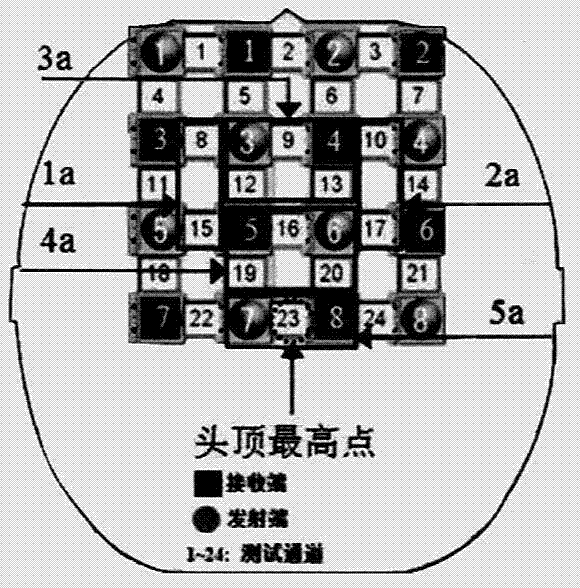Implementation method for identifying motion models based on cerebral-cortex hemoglobin information
A movement mode, hemoglobin technology, applied in the extension of natural legs, appliances that the disabled can operate, medical science, etc., can solve the problem of reducing the significance of P300 potential, the operation time of brain-computer interface should not be too long, and the time resolution Low-level problems, to achieve the effect of facilitating fast pattern recognition, reducing pattern recognition time, and improving recognition speed
- Summary
- Abstract
- Description
- Claims
- Application Information
AI Technical Summary
Problems solved by technology
Method used
Image
Examples
Embodiment Construction
[0045] The present invention will be further elaborated below in conjunction with the accompanying drawings.
[0046] First of all, some explanations are given for some marks in the drawings of the specification:
[0047] TA: sit down; TB: stand up; rest: rest; Ta: step up; Tb: step down; Tc: step back; rest: rest; S1, deoxygenated hemoglobin; S2, oxygenated hemoglobin; * and * marks indicate oxygenated hemoglobin Statistically different from the rate of change of deoxyhemoglobin.
[0048] Such as Figure 1 to Figure 7 As shown, a method for realizing motion pattern recognition based on cerebral cortex hemoglobin information comprises the following steps:
[0049] (1)) Four motion modes are set, that is, going up and down steps and getting up and sitting: the up and down steps motion is also called the non-mirrored periodic motion of both legs; the described getting up and sitting motion is also called mirror image symmetry of legs Exercise; the subject autonomously control...
PUM
 Login to View More
Login to View More Abstract
Description
Claims
Application Information
 Login to View More
Login to View More - R&D
- Intellectual Property
- Life Sciences
- Materials
- Tech Scout
- Unparalleled Data Quality
- Higher Quality Content
- 60% Fewer Hallucinations
Browse by: Latest US Patents, China's latest patents, Technical Efficacy Thesaurus, Application Domain, Technology Topic, Popular Technical Reports.
© 2025 PatSnap. All rights reserved.Legal|Privacy policy|Modern Slavery Act Transparency Statement|Sitemap|About US| Contact US: help@patsnap.com



